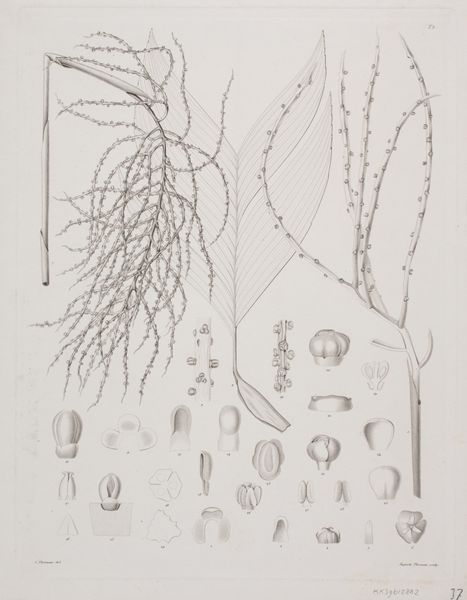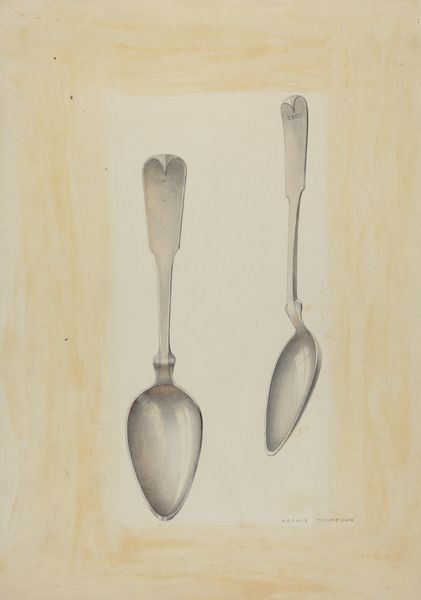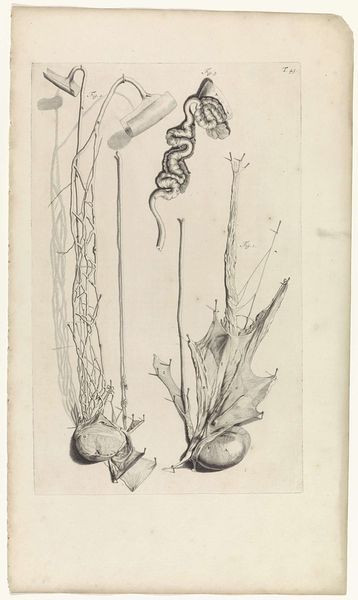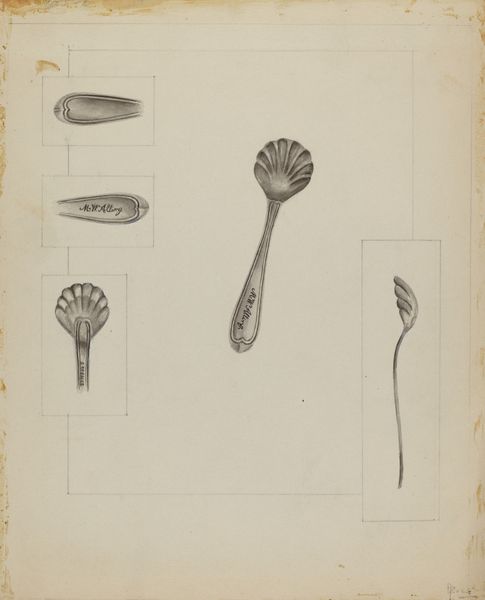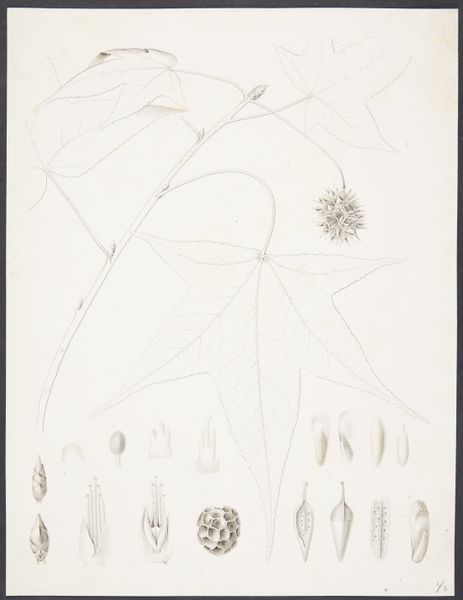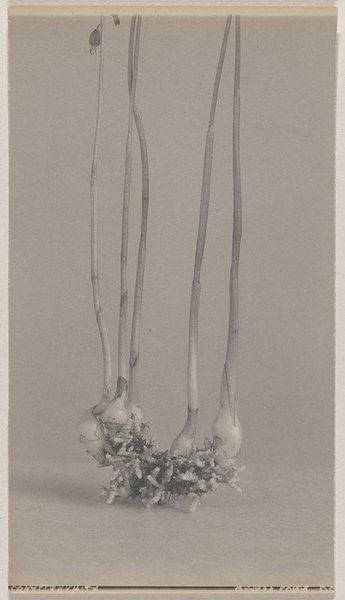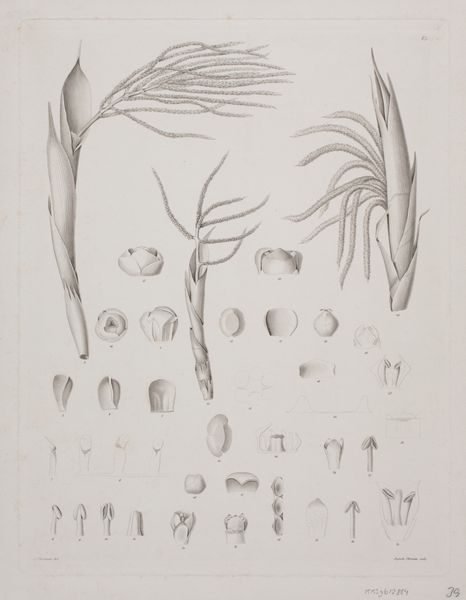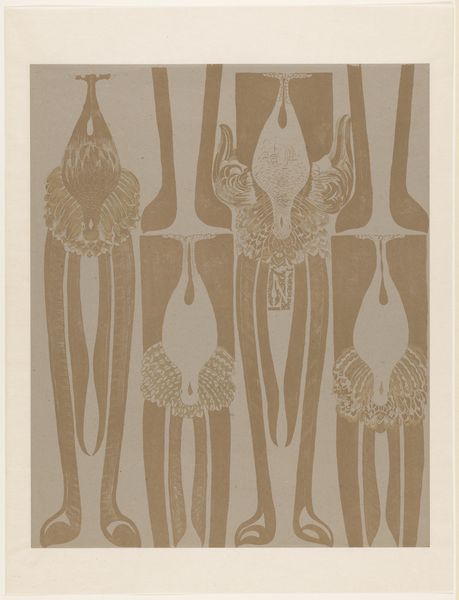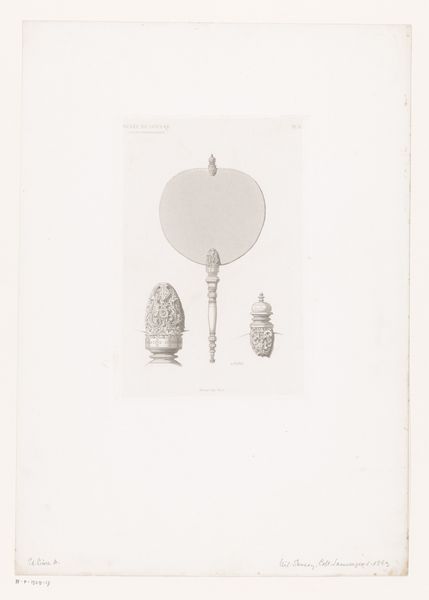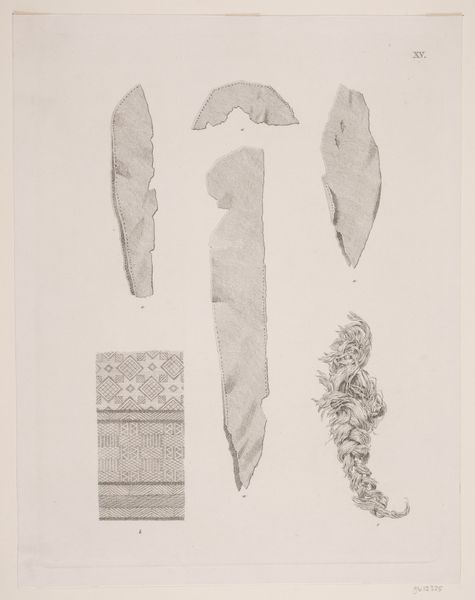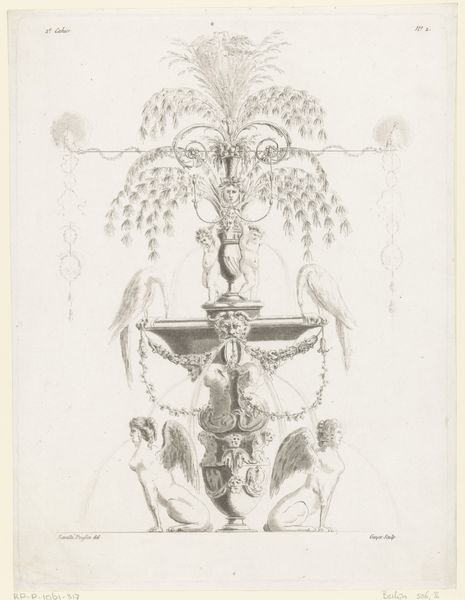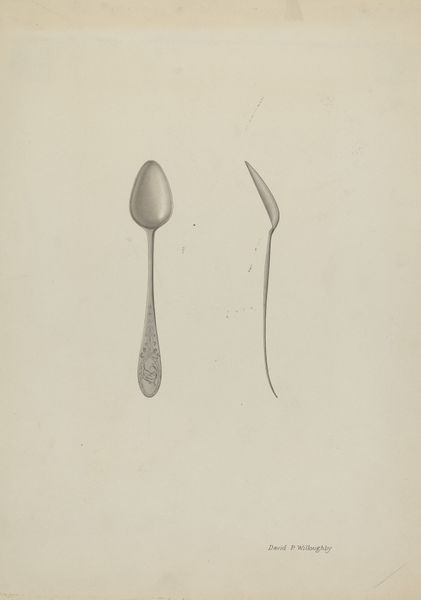
drawing, print, etching, paper, ink, graphite
#
drawing
# print
#
etching
#
etching
#
paper
#
ink
#
graphite
#
academic-art
Dimensions: 340 mm (height) x 260 mm (width) (plademaal)
Curator: Up next, we have "Botanisk radering," an etching made between 1850 and 1899 by Augusta Thornam. It's currently held here at the SMK. Editor: The immediate impression is almost ghostly—ethereal, delicate lines forming botanical studies. There’s a precision to the forms, but rendered in such a light tonality. Curator: That precision really speaks to the context of botanical illustration during that era, often intertwined with colonial expeditions and scientific cataloging. The very act of etching, demanding meticulous control, reinforces the scientific gaze imposed on the natural world. Who gets to categorize and define these specimens? What’s prioritized in the frame? Editor: Precisely! The composition itself is interesting—the tall leaves reaching upward, contrasting with the fragmented, almost dissected components below. The textures also play against each other. Note the wispy filaments next to the density of the central fruit. Curator: And Thornam, as a woman artist, was likely excluded from formal scientific circles. Perhaps she employed artistic practice as a means to circumvent those social restrictions, contributing to a broader understanding of her botanical subject through detailed studies and representations. There’s something almost subversive about taking up space as a woman in the sciences through art making. Editor: It's a silent study—there’s an objective clarity to the draftsmanship. The use of light and shadow describes depth, but in such a muted palette that emphasizes form. Semiotics would suggest the choice of forms are not an arbitrary one: each angle, each structure, speaks volumes to a scientific, structural analysis of these flowers. Curator: Absolutely. By emphasizing formal objectivity through the work’s layout, technique, and subject matter, perhaps Thornam's artwork was implicitly advocating for the objective credibility of women as both researchers and artists within a culture intent on repressing female intellect. Editor: Looking more closely, it’s evident she wasn't just illustrating nature. Thornam mastered a sophisticated graphic arrangement. I find that very powerful. Curator: It’s fascinating to consider the multiple layers interwoven into a work like this. I invite our audience to spend some more time observing Augusta Thornam's "Botanisk radering," recognizing both its surface appeal and the more deeply-rooted discourse it represents. Editor: I couldn’t agree more. There’s a rigorous beauty in this etching, a clear example of art elegantly serving a deeper engagement with the world.
Comments
No comments
Be the first to comment and join the conversation on the ultimate creative platform.
